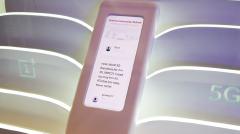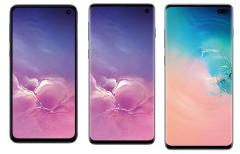Categories
The 7 best things about the iPhone 15 series
6 minute read

AApple has finally announced their iPhone 15 series, and you can preorder your very own from September 15.
Live from the Steve Jobs Theatre in California, Apple’s CEO Tim Cook revealed the four iPhone 15 series options: the iPhone 15, iPhone 15 Plus, iPhone 15 Pro and iPhone 15 Pro Max.
There’s some exciting stuff here, so let’s jump into it!
1. USB-C replaces Lightning, Qi2 wireless charging added
After many years of Lightning chargers, Apple is adopting the USB-C standard required by the EU and already used on its tablets and laptops (not to mention the millions of Android phones and other devices).
This change will allow a single cable to charge Apple’s entire line-up and also allows for faster 35W charging. However, Apple seems set on only allowing higher bandwidth 10Gbps data connections on its iPhone Pro line-up, with the non-Pro models limited to the usual USB 2.0 speeds of 480Mb/s. You can also use a USB-C to USB-C cable to charge your Watch or AirPods from your iPhone.
Finally, Qi2 wireless charging has been added, with the first chargers to debut towards the end of 2023.
2. Dynamic Island comes to all models
The Dynamic Island feature from the iPhone 14 Pro and 14 Pro Max is now standard on the iPhone 15 and iPhone 15 Plus, so the notched era that started with the iPhone X in 2017 is done and dusted. The Dynamic Island can now get wider and show more information at the top of the screen.

There are several other screen updates, including the screen getting much brighter. It can now reach up to 2000 nits outdoors and 1600 nits in Dolby Vision HDR highlights. However, the regular iPhone 15 models won’t get the higher refresh rate (“ProMotion”) displays available to the Pro models.
There’s an interesting new always-on display feature on the Pro models too, enabled automatically when the phone is charging in landscape mode. This can be customised to show the time, along with other information.
3. Faster Apple Silicon chipset
A faster chipset often comes hand in hand with a new iPhone model, and indeed the iPhone 15 models adopt the 4nm Apple Silicon A16 Bionic chip we saw in last year’s iPhone Pro models.
However, this year’s Pros also get a bleeding edge 3nm A17 Pro processor. This should increase their performance by around 10% and their GPU performance by 20%, while reducing power consumption by up to 35%. Dedicated hardware for a ProRes codec and AV1 decoder (handy for streaming videos using less bandwidth) are also included.
But more exciting still is the fact that the iPhone 15 Pro has a new six-core GPU capable of hardware-accelerated ray tracing; usually reserved for discrete desktop-class graphics cards or high-end gaming handhelds. Apple even announced console games Resident Evil 4, Resident Evil Village and the upcoming Assassin’s Creed Mirage will launch on the iPhone 15 Pro, which is not something I ever expected to write!
4. UWB chip for Apple’s Vision Pro headset
Apple’s AR/VR Vision Pro headset is a big release for the company; a new product line supported by the inclusion of a second-gen UWB (ultra wide band) 7nm chip in the new iPhone models (and the new Series 9 Apple Watch models).
It’s fair to say that Apple’s headset looks pretty incredible based on what we’ve seen thus far, though it’s hard to guess whether a mass-market Vision headset will be on the market before the average iPhone owner has upgraded to a later-model iPhone handset. You can even record ‘spatial video’ 3D videos using the iPhone 15 Pro’s main and ultra-wide cameras, then watch them on the Apple Vision Pro later.
Perhaps the better use case for UWB right now is the ability to locate other UWB2 devices, like phones and earphones, from longer ranges and with better precision. You can also use the Precision Finding feature to get directions to nearby friends in crowded spaces (with their permission, presumably).
5. Design updates for both base and Pro models
Apple’s base-level iPhone 15 models have adopted a host of minor design tweaks, namely a frame with rounded edges and colour embedded inside the camera bump. Inside, there’s a more repairable 75% recycled aluminium chassis. There’s also a ‘ceramic shield’ that replaces the glass found on prior models.

The iPhone 15 Pro gets more interesting design upgrades, with a new ‘Grade 5’ titanium frame that allows Apple to reduce the weight of these phones without sacrificing strength. These come with slimmer bezels around the screen that shrink the size of the phone overall, while other design tweaks differentiate these models from their lower-end brethren. This includes a programmable action button to replace the mute switch (an iPhone staple since the very first model in 2007). You can keep the standard mute functionality, or set the button to launch accessibility features, run shortcuts, start the camera, toggle the torch and more.
The new button and other tweaks mean that if you’re thinking of picking something up from the new iPhone 15 series, you’ll need a new case to go with it.
6. 48-megapixel camera for iPhone 15 and a tetra-prism zoom lens for iPhone 15 Pro Max
The standard iPhone 15 model now features a 48-megapixel main sensor with an f/1.6 aperture, compared to a 12-megapixel unit on the iPhone 14. Interestingly, it can use the middle 12MP portion to enable a 2x zoom, which is handy for a phone that doesn’t have a dedicated zoom lens.
Apple also promised richer colour and better low-light performance. You can now capture depth information in a standard picture, allowing you to change a photo to portrait mode after shooting.

The iPhone 15 Pro model also sees changes, with a physically larger sensor for its 48-megapixel camera that improves low-light performance. The 15 Pro Max also uses a ‘tetra-prism’ lens for its 5x optical zoom camera, which is a technique using four successive mirrors to increase focal length and unlock higher optical zooms than a more traditional camera. Samsung, Google and Huawei have already started using similar periscope-style lenses, and the results for long-range shots are impressive.
7. New colours
After years of offering iPhone models in black or white with silver elements, Apple introduced more vibrant colours with the iPhone 5c and hasn’t looked back since. This year’s iPhone 15 base models are available in pastel shades of blue, green, yellow, pink and black, while the Pro materials are available in four subtler shades of titanium: white, black, blue and natural.

Wrapping up
All in all, it’s a surprisingly comprehensive upgrade to Apple’s iPhone line-up that goes way beyond what we predicted. I hope this blog has sparked some interest in Apple’s 15th-gen phones, which debut on 22 September 2023.
Of course, all models are coming to giffgaff too. Shop our full new and refurbished range here.
If you’ve got questions or comments, feel free to join us in the giffgaff community forum or tweet me @wsjudd. Thanks again for joining me, and catch you next time!





